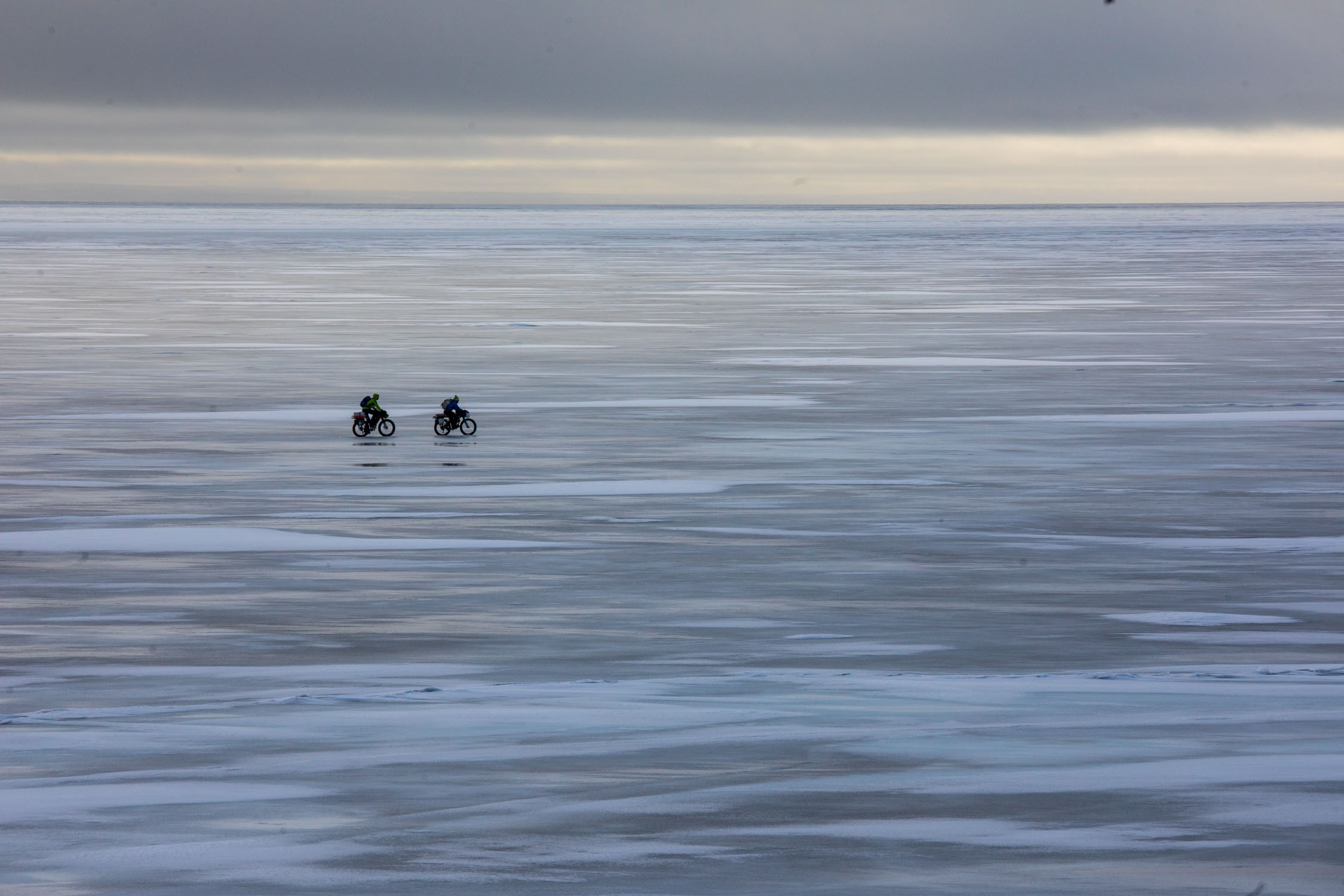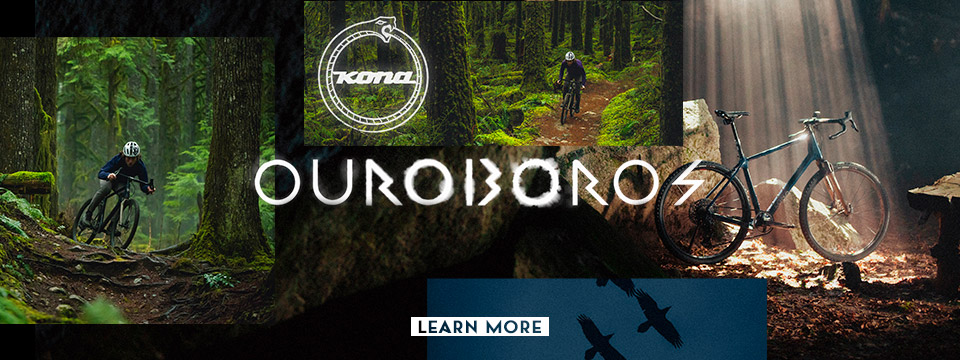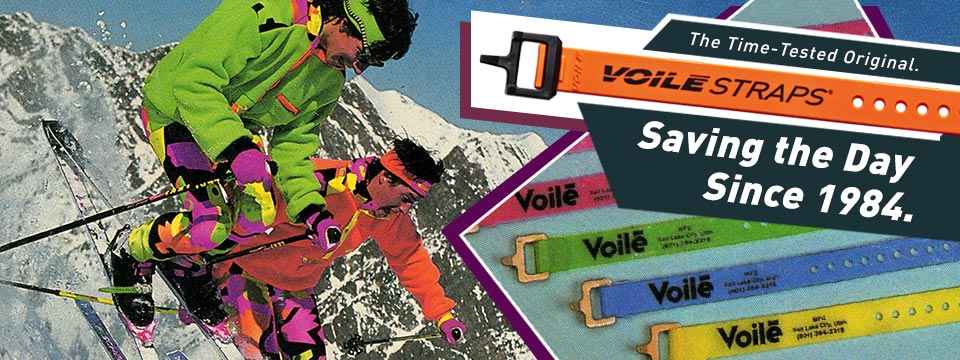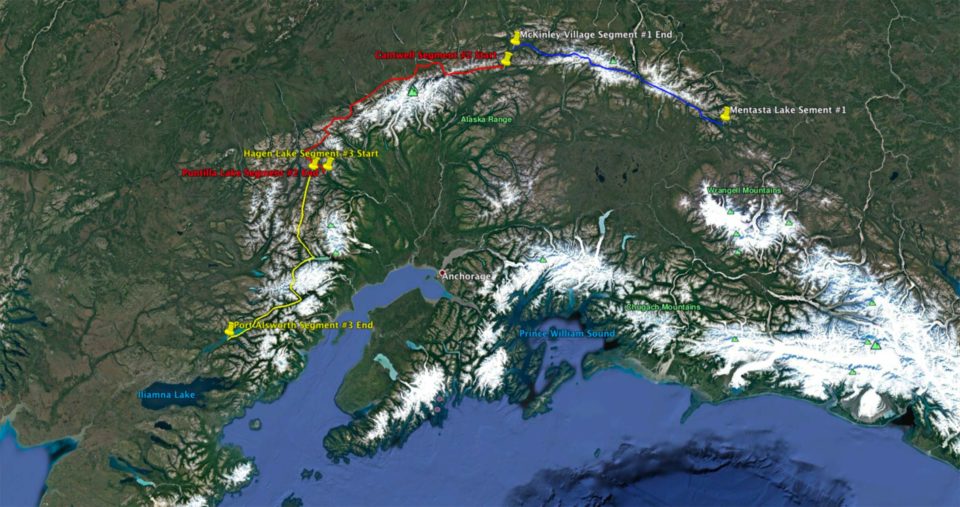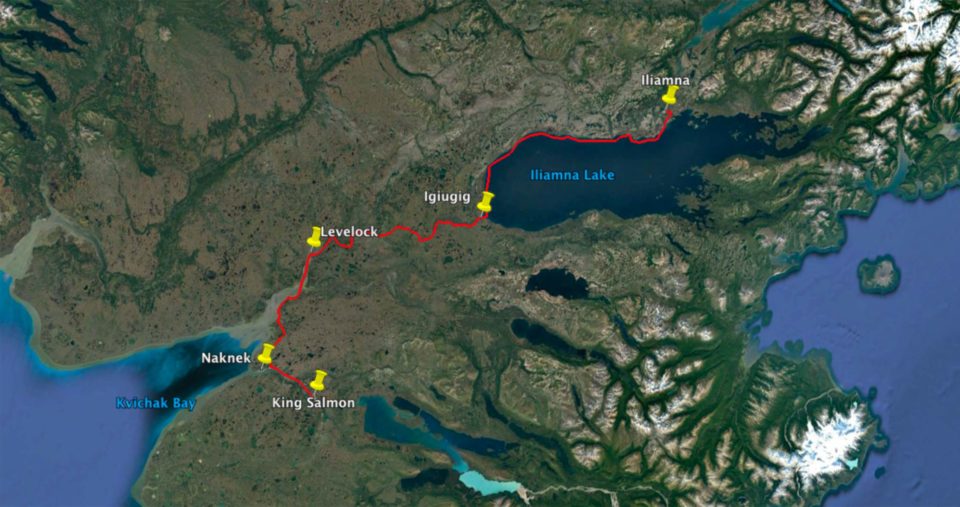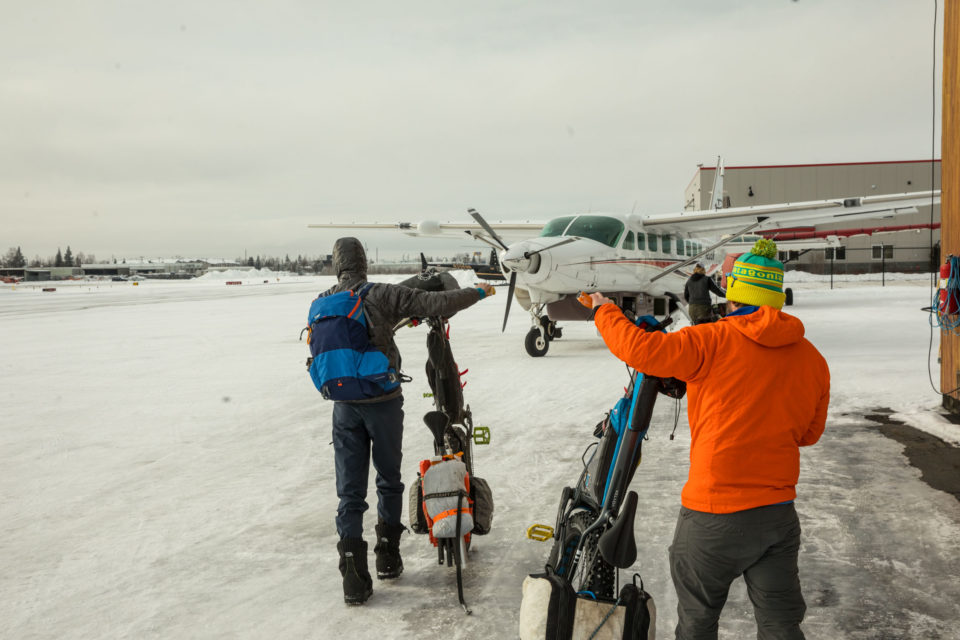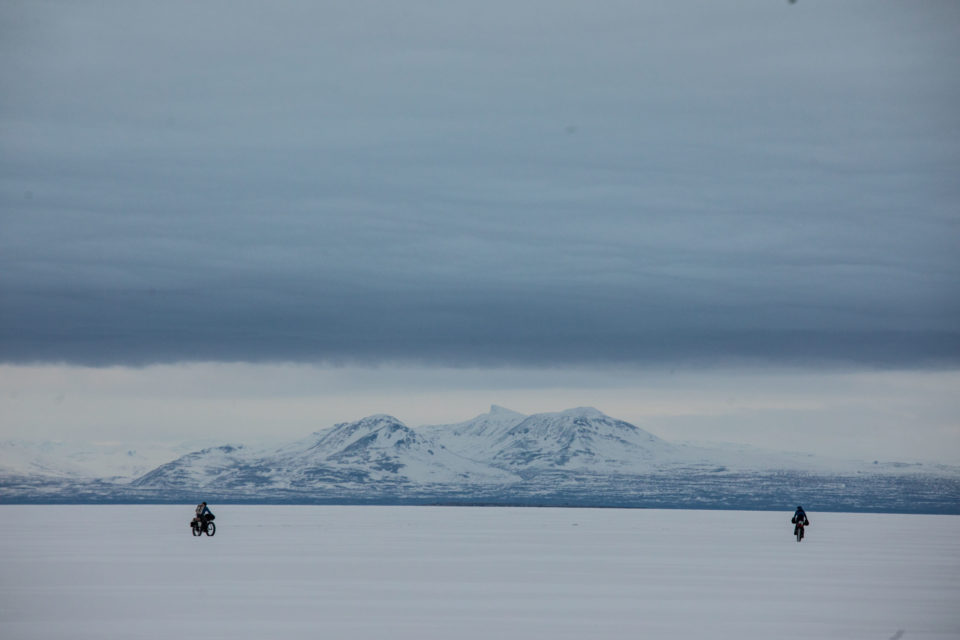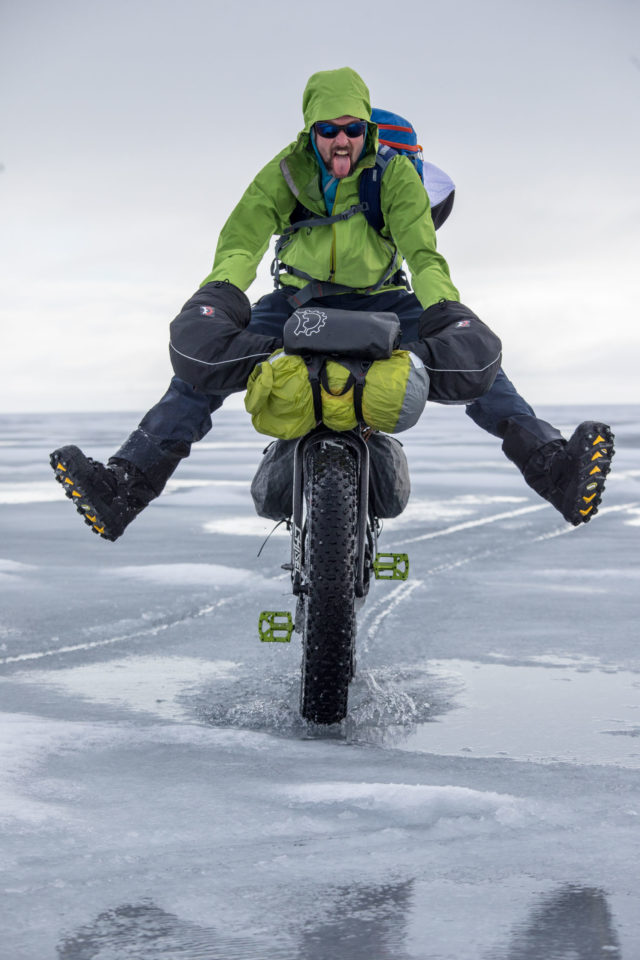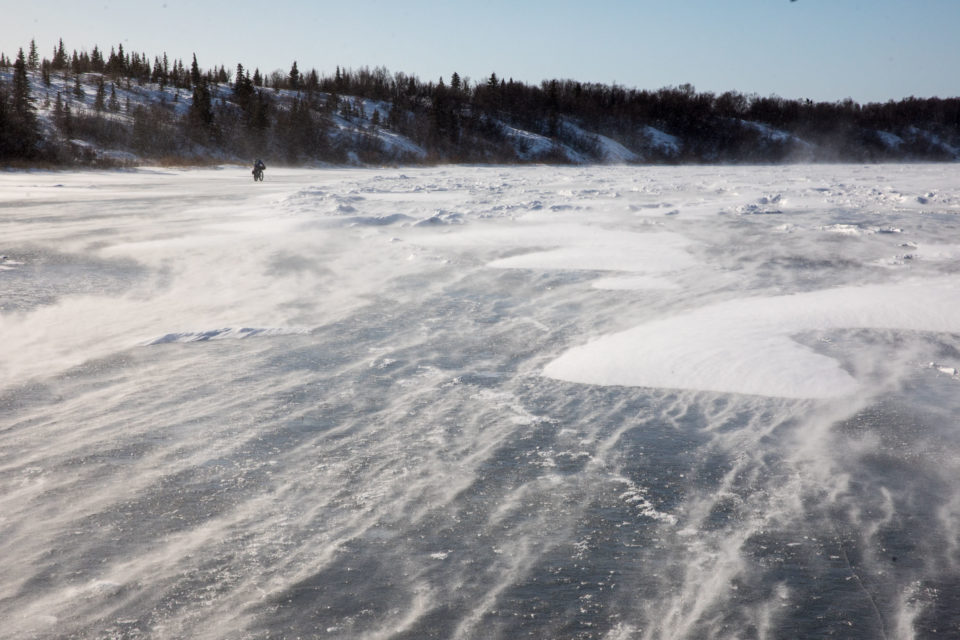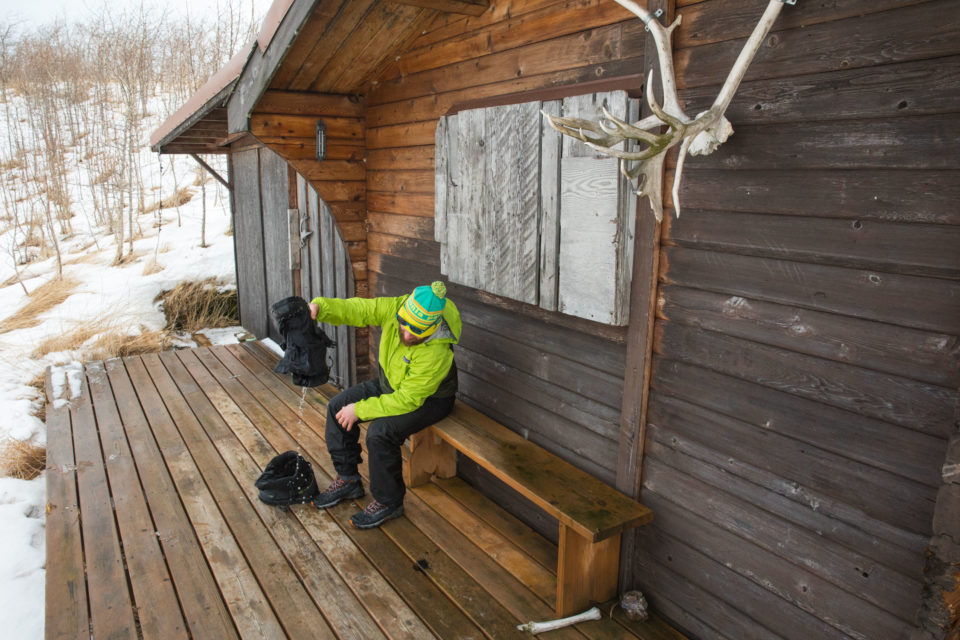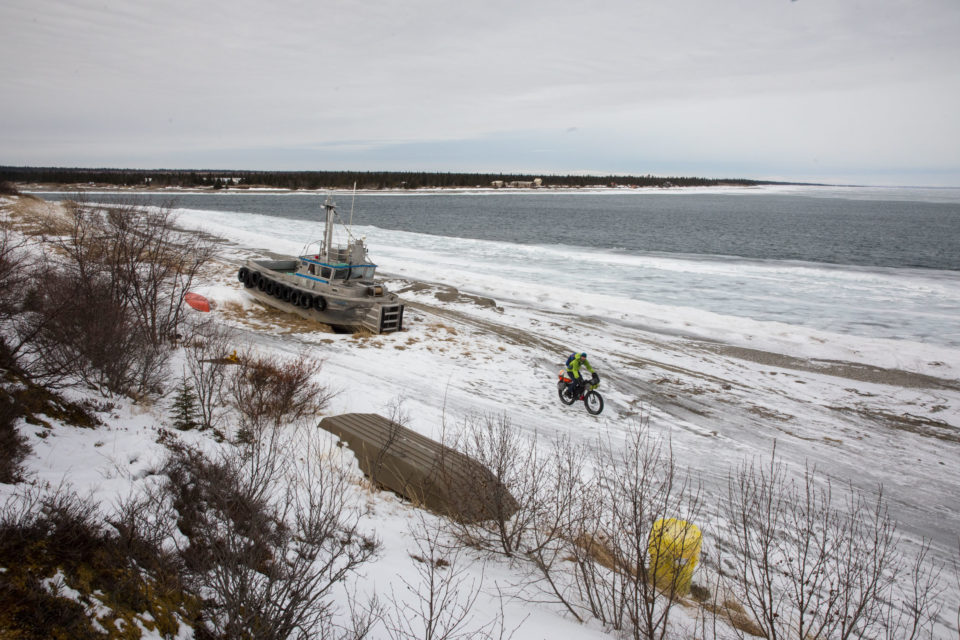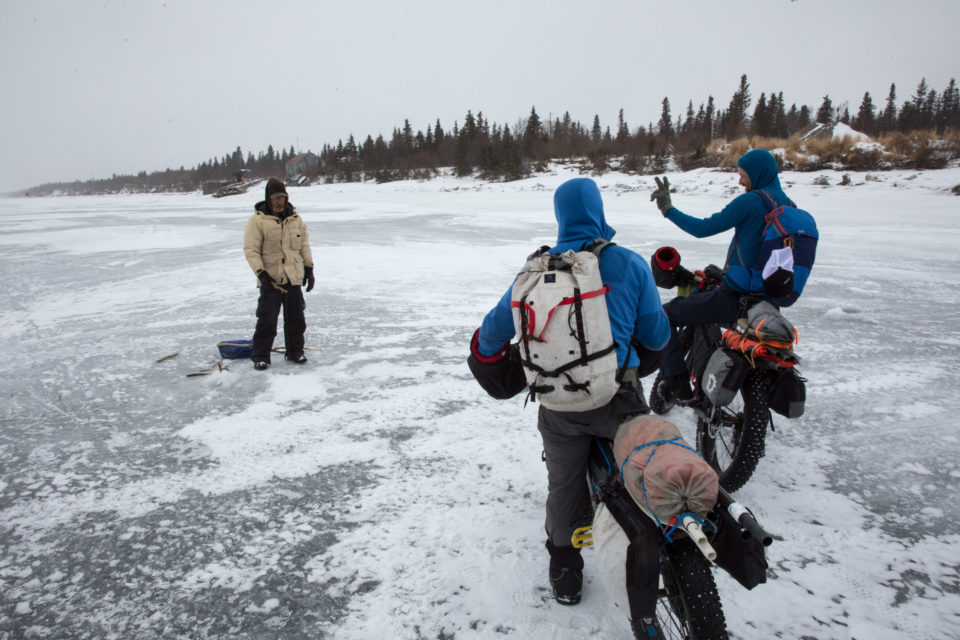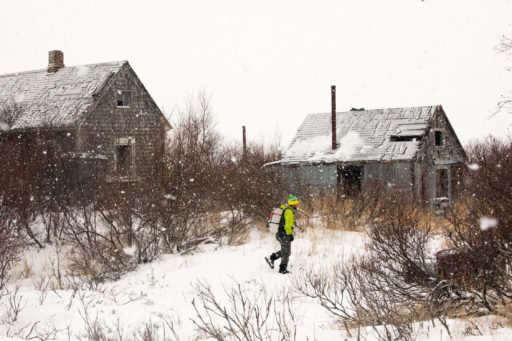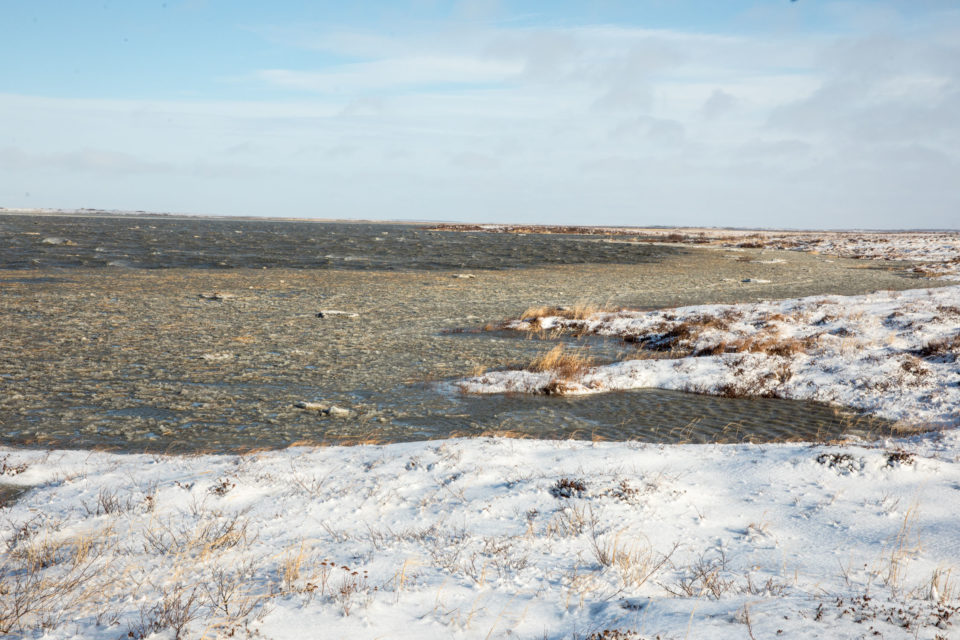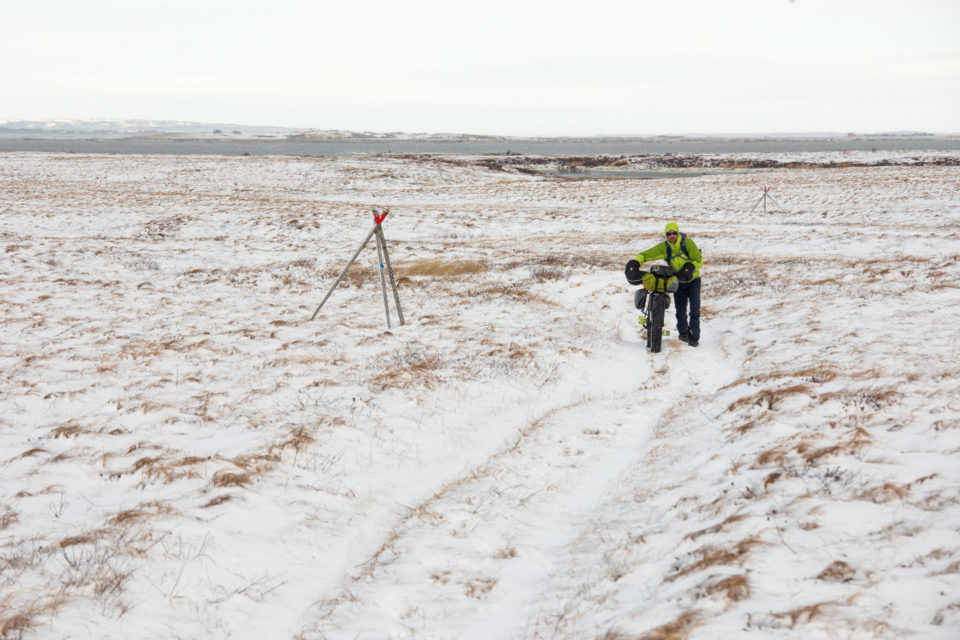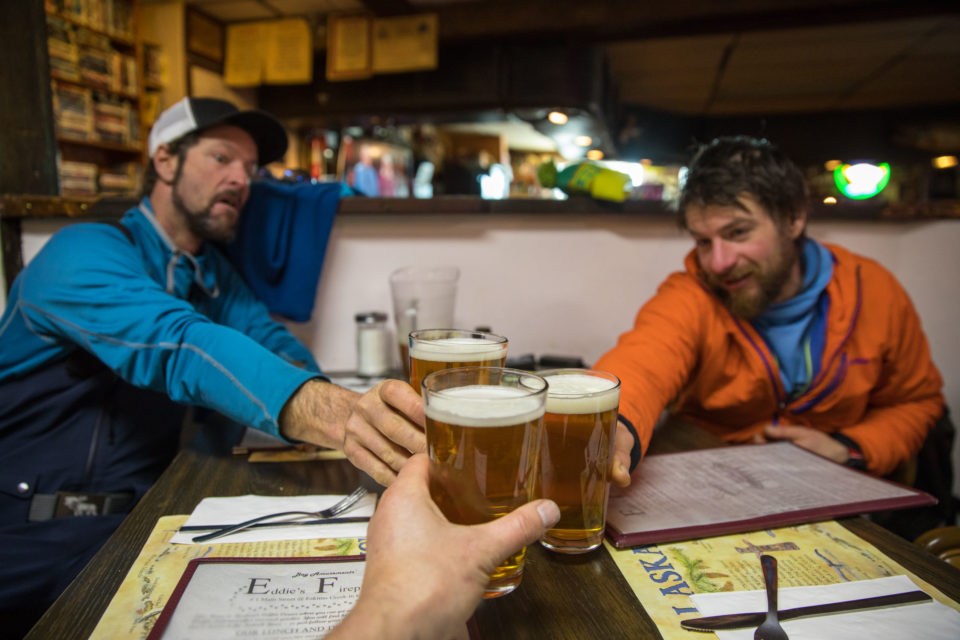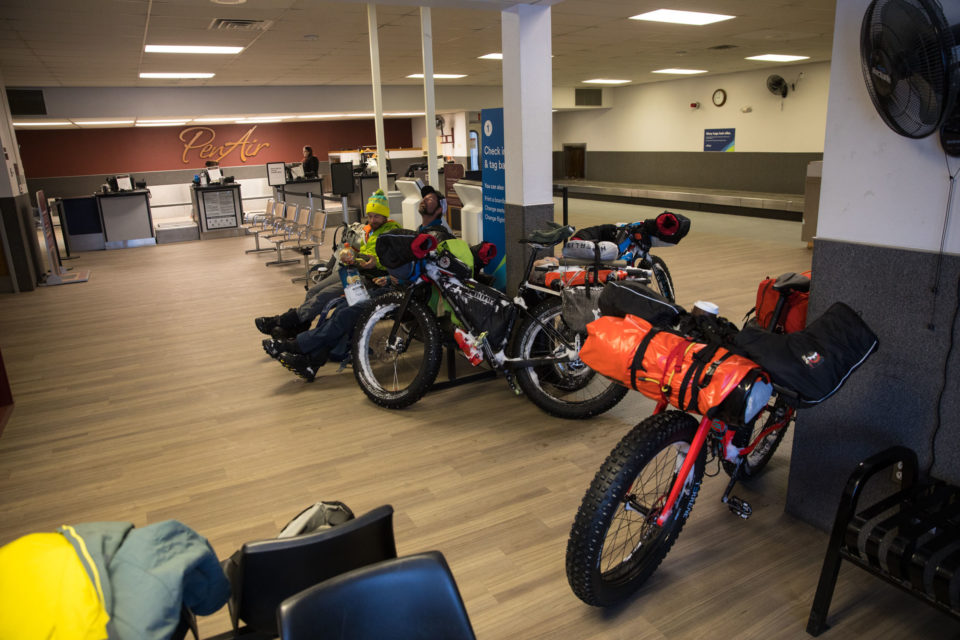Journey to the Middle of Nowhere
Dustin Eroh, Andrew Burr, and Steve “Doom” Fassbinder set out to fatbike through Alaska’s frozen backcountry to Bristol Bay via Lake Iliamna, the largest lake in Alaska…
PUBLISHED Oct 29, 2019
Words by Dusty Eroh (@dirtydak), photos by Andrew Burr (@andrew_burr)
Part of the Alaskan backcountry’s sense of adventure comes from the unknown and the completely unexpected. You can plan, research, and bring every aid you have within reach, yet still be entirely unprepared for what you are about to experience.
In mid March of 2018, a few friends and I set out for an adventure into the southwestern portion of Alaska to attempt a traverse from the village of Iliamna to the tiny town of King Salmon. With only an idea of a route and no sense of what conditions would be like, we loaded our bikes and gear for six days onto a small prop plane. The plane was loaded down with several village residents and building materials, including new doors, windows, and lumber, and together we all packed in and prepared for departure. Our only goal was to have a great time and explore a new area—and to make our flight from King salmon in seven days!
As 2018 rolled around I got a message from my buddy Andrew Burr asking about doing a winter trip. “Hell yeah, come on up!” I responded, and shot him some ideas. Before long, our friend Steve “Doom” Fassbinder was also in the mix and we were ready to roll. I dropped Todd a line asking him if he wanted to join, but unfortunately the timing didn’t work out. Realizing Todd wouldn’t be able to join was a little hard for me to accept as it felt like I was continuing on a journey without my main partner in crime. You form a bond during mentally and physically intense trips, and Todd and I have a long history of embarking on those types of adventures together.
At 77 miles long and up to 22 miles wide in sections, Lake Iliamna is the largest lake in Alaska. And it was one of the bigger unknowns in our trip plan. Was the lake going to be frozen? If it was, were all the tributaries going to be frozen too? Going off of spotty imagery and what little I could get out of the natives in the villages, I concluded it most likely would be. However, just in case we decided to bring lightweight packrafts. I hoped we wouldn’t have to use them, but felt better knowing we could make some crucial crossings if need be.
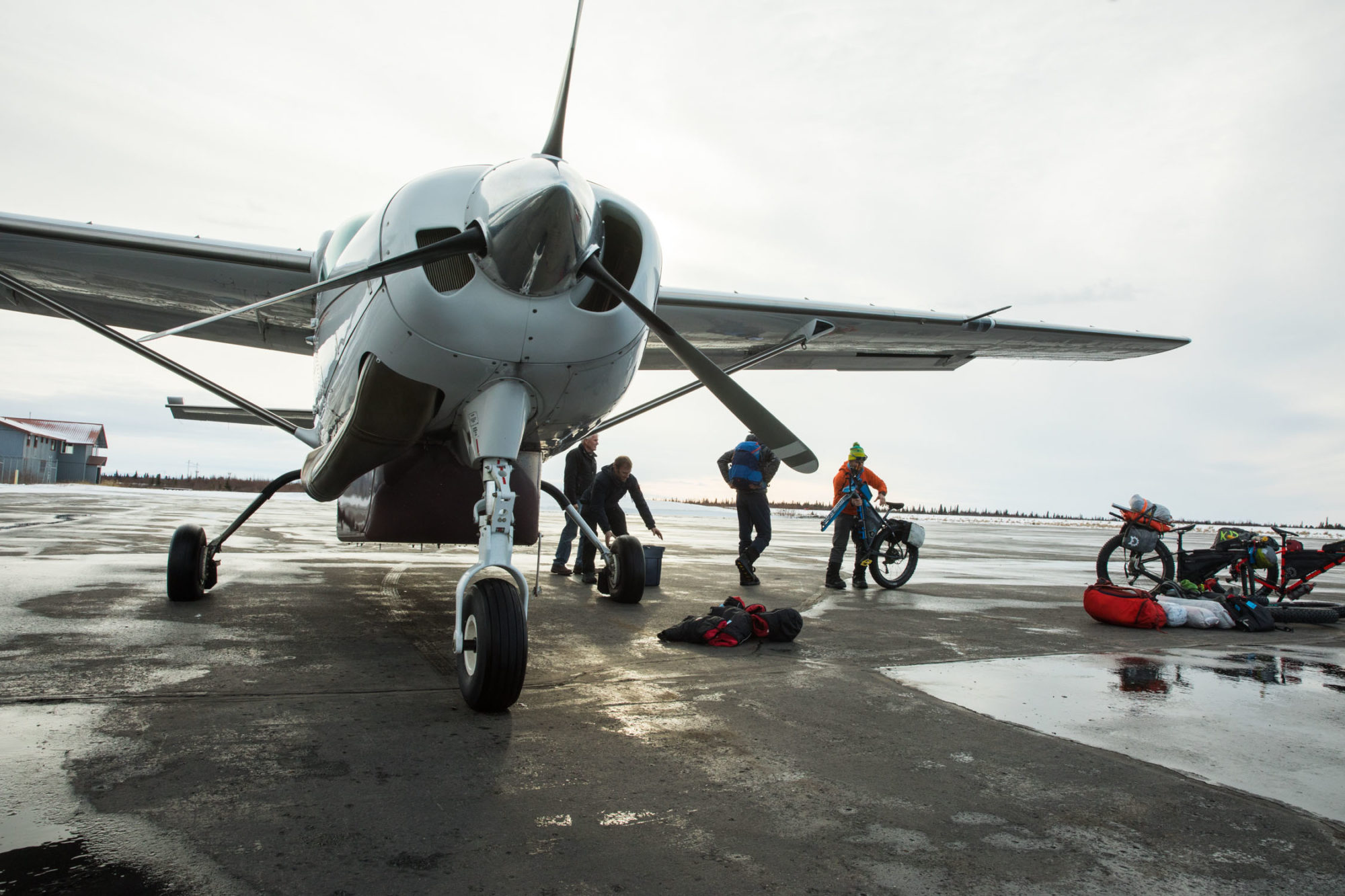
After a beautiful flight through steaming volcanoes and glorious looking ski lines, we had our first real glimpse of the lake. It was frozen! After landing on the paved air strip in Iliamna, we were greeted by nothing but solitude. There was no one around, just us and an empty runway. With our flight gone and no one in sight, we put our kit together right on the tarmac and set off for the lake.
We rode a few miles of snowy pavement until we hit the slew that would take us to the main lake. Riding through the village, we saw only a few dogs and one local driving down the road. The feeling of solitude grew as we tentatively biked onto the lake and the vast expanse of frozen, snow-covered lake revealed itself in front of us. It was truly a mind-blowing sight to be staring across the lake and seeing mountains that were more than 15 miles away. It is the kind of feeling that makes your stomach sink. We shouldered our way along the lake, heading for the western portion where the Kivchak River starts and continues to the mouth of Bristol Bay and the Arctic Ocean.
The biking was slow going but we managed to make good time. There were about five inches of crunchy snow covering the lake and the occasional snowmachine track. We tried a combination of using the snowmachine track, breaking trail, and trying to ride the sloping, partially snow-covered banks. As it started getting dark and the wind started picking up, we found a cove with a small bank we could duck into for some protection during the night.

Ecstatic to be finally starting the trip, we set up camp. As we ducked into the tent for the night we heard the rain start to fall. Waking up predawn, we were surprised that all of us had slept quite warm, and we also began to realize we never stopped hearing the patter of the rain and wind against our tent through the night. As I unzipped our tent I realized we were no longer camping on the snow. Instead, we were camping in about four inches of water resting on top of the frozen swap at the lake’s edge. What a day we were in for.
The combination of the four inches of slushy water and the persistent 15 mph headwind and rain made for slow and wet riding on the lake. We spent about 12 hours biking and made it about 20 miles. Absolutely drenched, we were ready to find a place to stop and search for some dry wood to start a fire with. We hadn’t been so lucky the night before. The wind persisted as the sun sank lower on the horizon, but the skies were clearing! By the time we found a snow-free gravel beach at the mouth of a small stream, the winds died down and the sky completely cleared up.
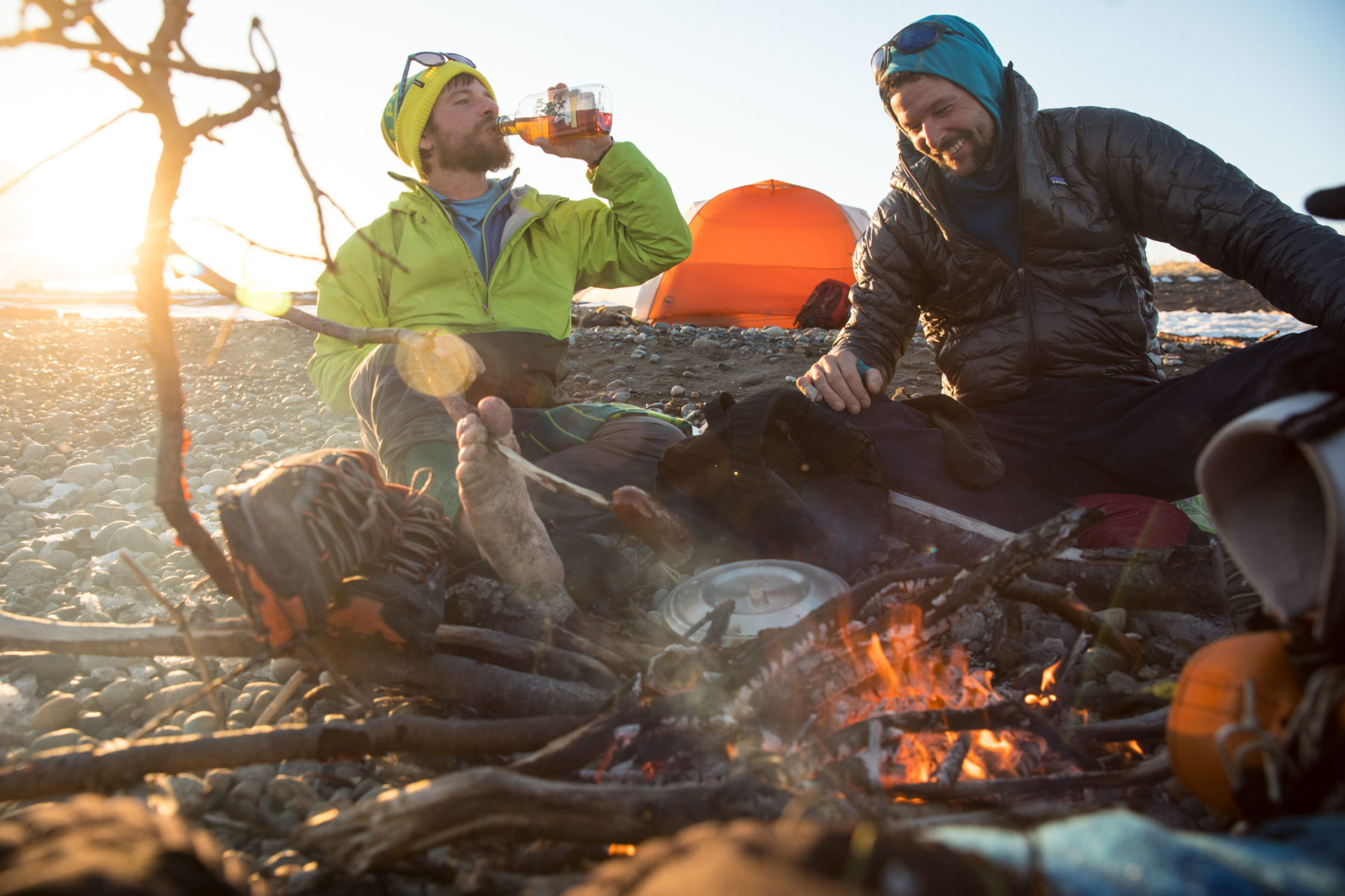
Stopping early that evening, we quickly scrambled to find dry wood to start a fire. With camp set and a driftwood fire roaring, we began the process of drying out our belongings. Within an hour of the sun creeping down from the horizon, everything that was remotely wet began to freeze solid. With clear skies, we lay down for bed and hoped for a cold night and a hard freeze.
Waking to the hard freeze we’d wished for, we were ready to make up for lost time! The four inches of slush was now completely frozen and polished as if a massive zamboni had run over the entire lake. With winds in our favor, we quickly made up for our short previous day, spirits soaring as we rolled along at nearly 20mph.
Stopping for some local beta, we discovered there had been some four-wheeler traffic from the village 35 miles down the river. We were in luck yet again as we started riding down the frozen tracks of the four-wheeler trail. Sadly, our luck was about to run out. As darkness took over, we stopped for the evening with snowflakes and winds ever increasing into the night.
We looked for a place to camp as the sun crept lower on the horizon. Rounding a point, we found a small cabin. And to our delight, we found a note stating the cabin was open to travelers and was well stocked with wood! The glow of the wood stove and the howl of the wind outside made us greatly appreciate the shelter offered to weary travelers on the river.
We were about to come upon the second biggest unknown of the trip: how to get from the Kivchak River to the small town of Naknek. This is where we were warned to head overland and not try to go to the mudflats in the bay. There were rumors of a trail that the natives of the area used from time to time when traveling from the village of Levelock to Naknek. At this time it was all hearsay as I was unable to find any hard evidence of it other than a hand drawn line on a map.
I checked the weather on my InReach to see what might be in store for the remainder of the trip, as we had only two and a half days to get to our flight in King Salmon. The weather report displayed on my device: “Tomorrow: clear and calm during the day. Increasing clouds, winds, and precipitation in the evening. The following day: clearing skies, decreasing temperatures, and winds out of the west from 40-50mph.”
Forty to fifty miles per hour! If this was correct, we were in for quite a beating while traveling to Naknek, where we’d eventually encounter a paved road that would take us to King Salmon. We all agreed to make a huge effort the following day and get as far as we could to avoid getting caught in the winds.
Waking before dawn, Burr, Doom, and I pushed down the wind-scoured river, making remarkable time. We covered our previous day’s millage in under two hours as we successfully approached the next leg of our adventure. As we rolled into the village of Levelock, we were nearly alone with the exception of one older native man fishing an ice hole at the edge of the river. We stopped to ask him a few questions, hoping he may have information on the overland route. Unfortunately, he didn’t speak any English. In fact, he didn’t speak a single word to us, only gestures in the downriver direction.
We searched the river banks, looking for what could possibly be a trail. By this time a family was traveling down to the river on four-wheelers, so we decided to ask them for any information. They were extremely courteous and offered the limited information they had on the route, which was not much considering none of them had ever taken it. The only information they had was to head down the river, eventually turn south, and go overland.
As the snow began to fall more heavily, we decided to push on. During our exploration of the cannery, we stumbled upon an old snowmachine track and remnants of an old trail marker made from tree branches lashed together in a tripod. To our dismay, the markers were scant and deteriorating. Even though the landscape was relatively flat with no vegetation taller than four feet high, we struggled to see the markers. We followed what may have been a trail for a few miles before it eventually disappeared.
With night approaching and conditions worsening, we decided to follow what looked like a natural bench on the map that was linked by small swamps and ponds. We agreed to stop at the bank of a swamp to set up shelter and escape from the winds.
We were sleepless that night as the winds terrorized our tent, threatening to collapse it at any moment. We had made a huge push and were within 12 miles of Naknek, and began preparing for battle the next day.
We woke to a very accurate weather forecast. As the high winds gnawed at our tent, we managed to pack our bikes and dismantle the camp. With winds increasing throughout the morning, we managed to depart from our swampy, windy camp before the whole thing was blown away. Progress was tough. With new snow overnight and high winds, both biking and communicating were nearly impossible. At one point I attempted to ride into the crosswind but lost my balance and fell. Typically, not a big deal, but in this particular fall, my fully loaded bike was captured by the wind, picked up, and flipped over like a kid doing a cartwheel. Wind is an understatement; this felt like a ground hurricane.
At a snail’s pace, we continued on our journey. Now going directly into the headwind, we pushed on with our heads down and took turns breaking trail. The person in front had it the worst, not only because they were breaking trail, but because they had to navigate…head up, facing the wind, searching for remnants of the trail.
This was a grueling job. Trying to make the best of it, we laughed it off and kept the conversation light. At one moment we thought it was funny how the wind was pushing the small trickle of a stream back upstream. It was comical and strange to see in this moment. The sky had cleared but the wind continued pounding us. We could see the coast just two miles in the distance. Massive breakers and ice were pushed onto the banks, spraying huge volumes of seawater in the air.
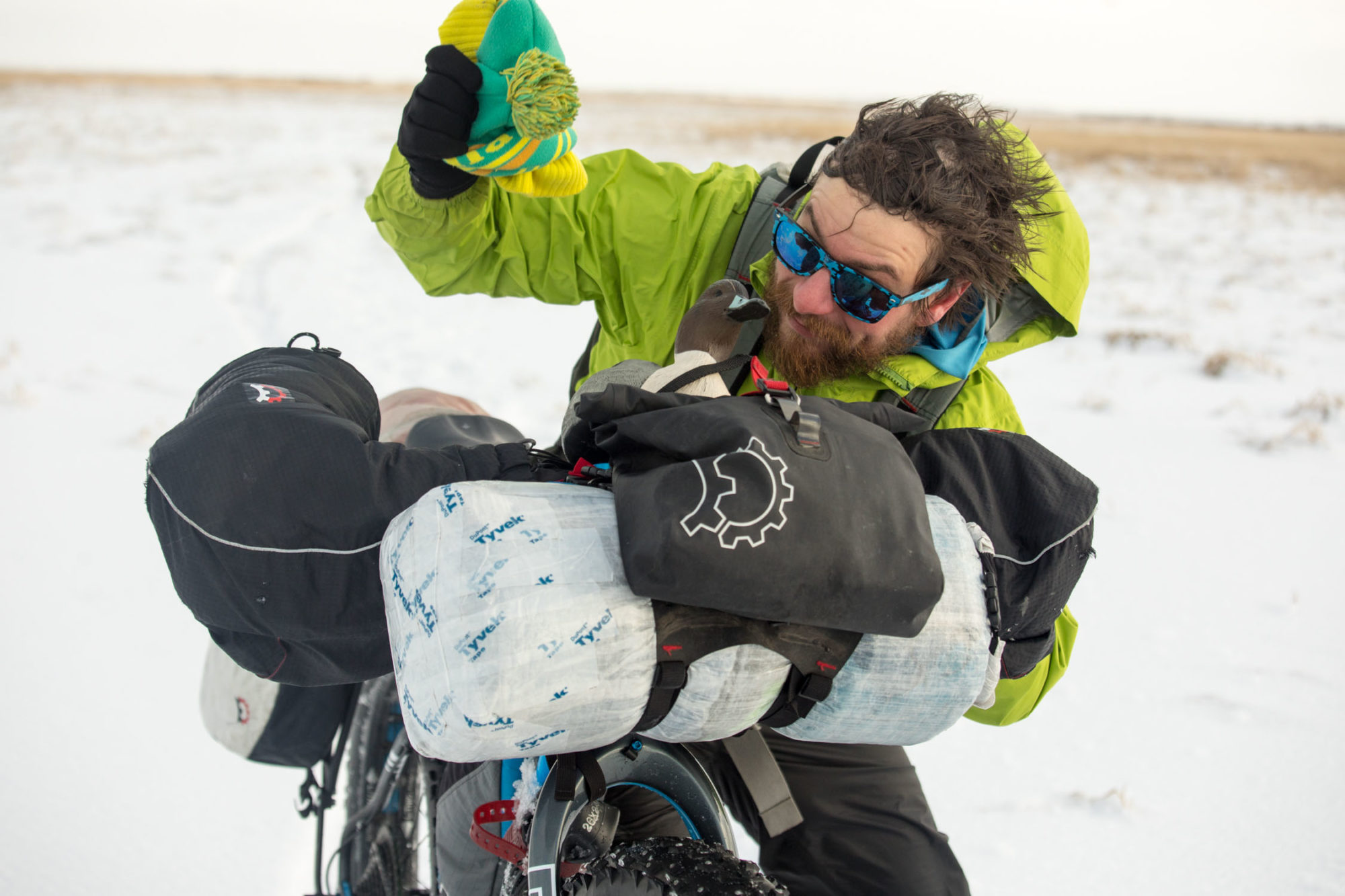
This is the unfortunate moment when our luck began to decline rapidly. The stream we were watching began running the wrong direction and was now flooding from the opposite direction. Water poured inland, and fast. The river otters, who had been avoidant of us during the entire trip, were now running, screaming by us in the opposite direction. Closer than I would ever have imagined. The ocean breakers and ice began pushing inland. As the water rose, we decided to act fast. The winds increased, the water approached, and we frantically rushed for the high ground. “High ground” in this area was nearly absent, but we found several feet of elevation to protect us from the incoming waters.
Running in high winds through snowy tundra is not a fast process, yet we managed to get to relatively safe ground. At this point, we were just heading to higher ground in roughly the direction of what looked like could be a trail. We looked back to see that our camp from the previous night was now completely submerged in sea water and ice. The sea surge had pushed inland almost two miles to completely cover the ground we had just slept on.
This is one of those dreadful moments that sinks into your soul as you realize that a slight delay could have resulted in our lives being in danger and this fun trip could have ended poorly for one or all of us.
With the high winds persisting, we escaped the flood zone and managed to find a recently traveled snowmachine trail. We were finally safe and it looked like we were going to make it to our destination that day with just a short section of bike pushing. As we topped the small pass, we could see the buildings of Naknek in front of us, and the land we had just escaped had been completely submerged by the sea.
We finally struck luck as we stumbled onto an unmapped road. Not only was there a road, but it was going in our direction, and with a tailwind. The wind was pushing so hard we didn’t even need to pedal to keep moving toward our destination. Making up for massive amounts of lost time, we cruised past Naknek and continued down the road toward King Salmon, our destination for the end of the trip.
We were set to depart on a commercial airplane back to Anchorage. The confused flight attendants stared at us as we wheeled our bikes into the small lobby at the airport. After some negotiation, we were able to convince them to load our bikes on the plane, with the agreement that we would have to gate check our front wheels.
After a 45-minute flight, we were back in Anchorage. We had only a few hours to get back to the house un-pack, re-pack, and get Doom and Burr back to the airport. What a trip, and to think it was less than a week from start to finish!
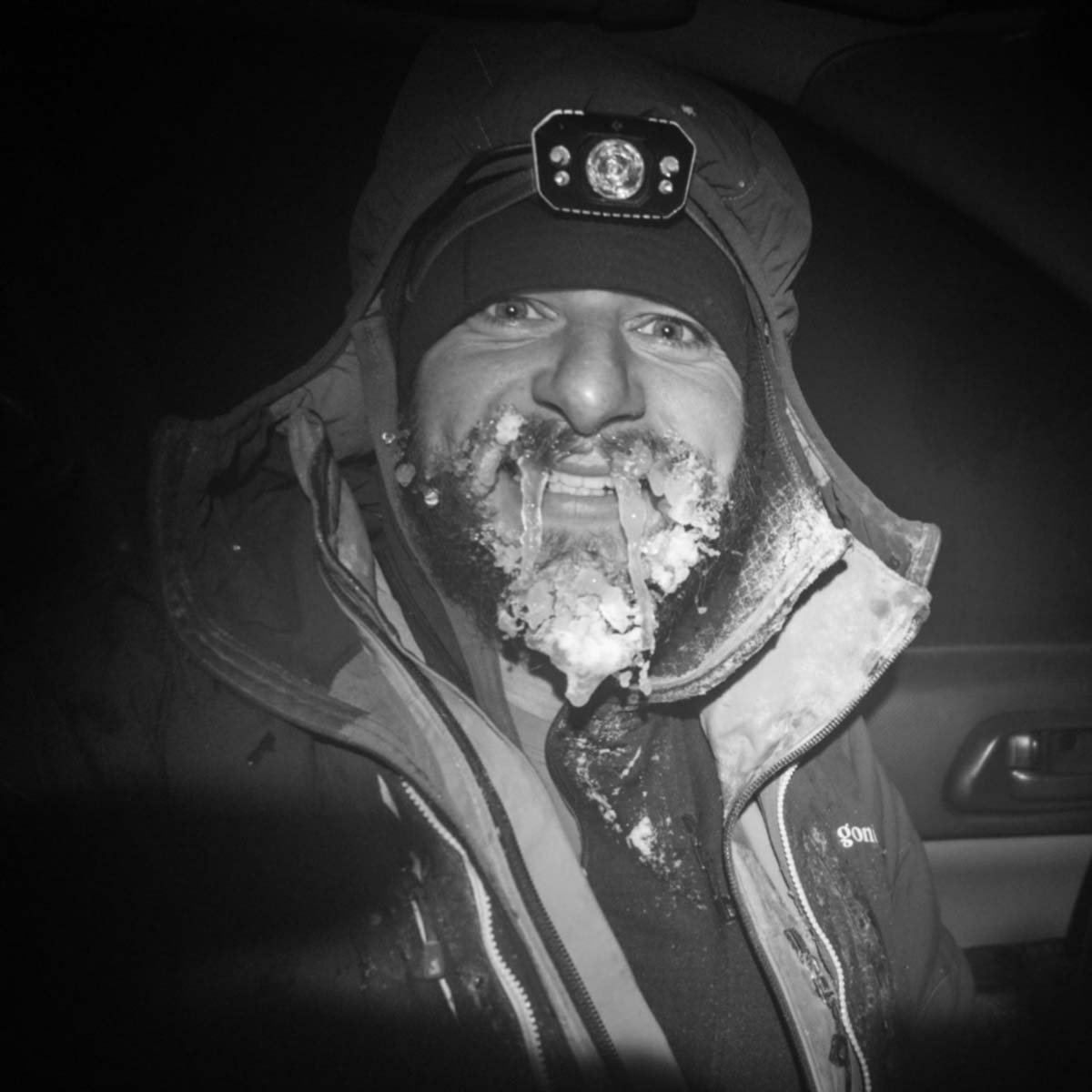
About Dustin Eroh
Dustin Eroh, otherwise known as “Dirty D” has been exploring Alaska’s backcountry since 2007 by any and all self-powered means. Dustin loves exploring with his bike and sharing his passion with others. Whether it be pedaling and pushing his bike through remote parts of Alaska or competing in ultra-endurance races like the Arizona Trail Race and the Highland 550, you’ll always find a smile on his face. Dustin is a designer for Revelate Designs and has recently started a mountain bike guiding company with his partner Christina Grande called Alaska Bike Adventures.
FILED IN (CATEGORIES & TAGS)
Inspiration
Your Stories
bikepacking-alaska fat-bike-bikepacking winter-bikepackingPlease keep the conversation civil, constructive, and inclusive, or your comment will be removed.






